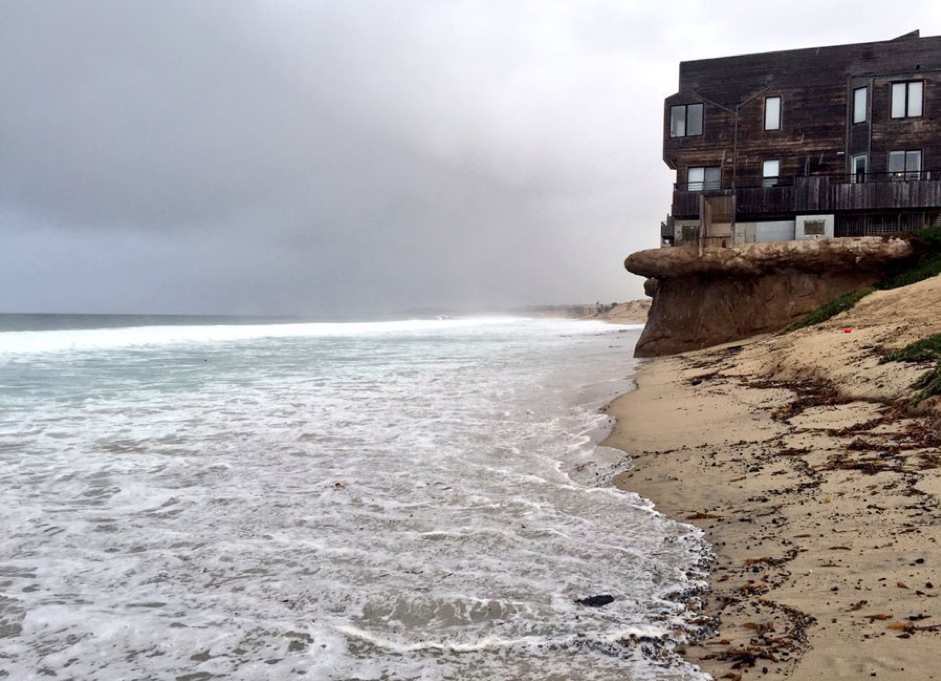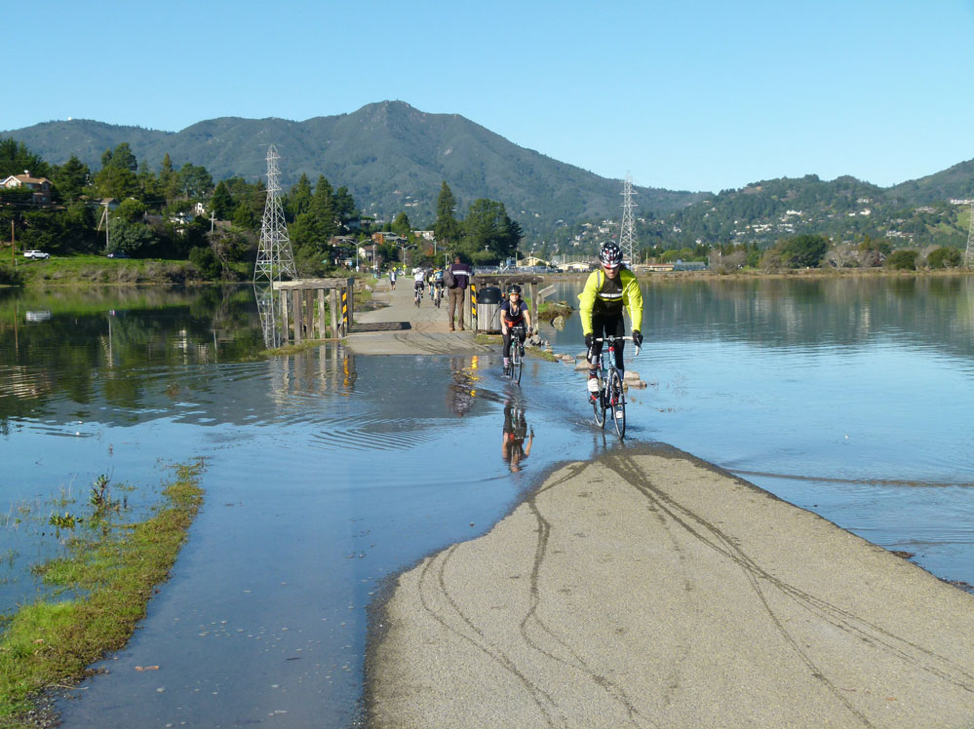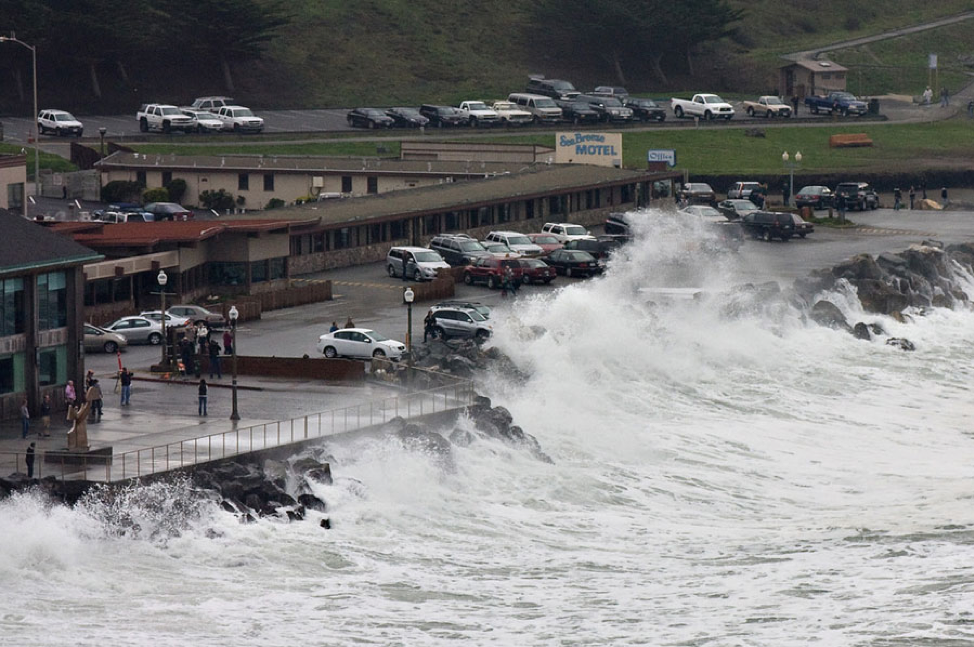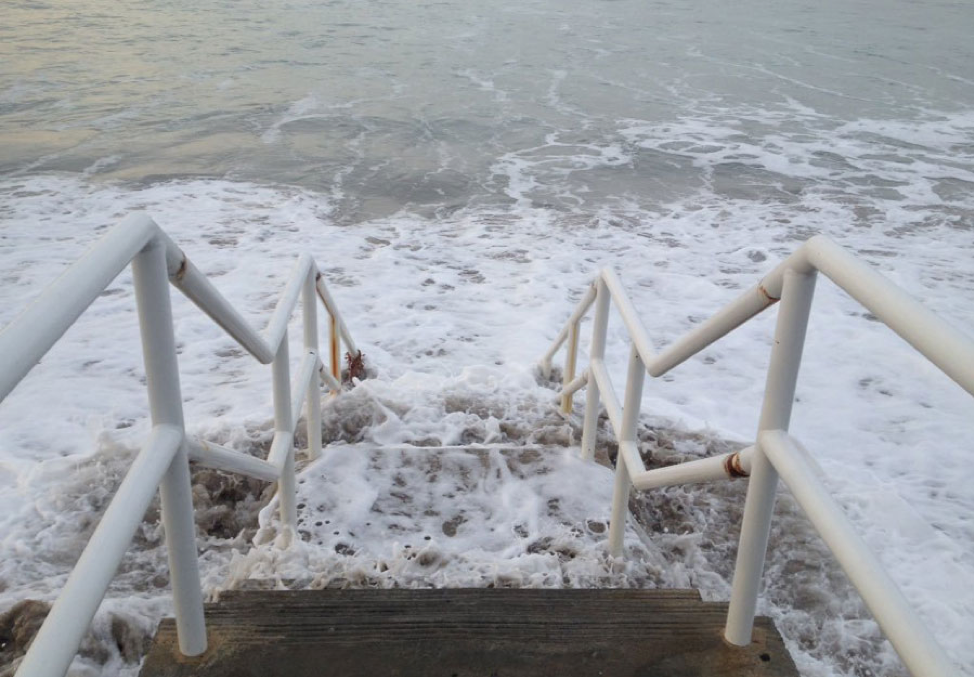“Managed Retreat from climate change isn’t turning out how we thought”
“Coastal Commission and City clash over managed retreat”
“Homeowners Fear Losing Property Over ‘Managed Retreat’ Policies To Address Sea Level Rise”
“Del Mar Will Stand Its Ground on Managed Retreat”
These are just a few of the many recent headlines addressing the retreat from rising seas in California, where the term “managed retreat” has become a contentious political term. For years, waterfront property has been synonymous with success and luxury. In some cases, development in low-lying areas preceded our current understanding of sea-level rise and erosion, which locks in a future of either catastrophic flooding, or relocation.

Many homes line the California coast, squeezing the beaches and coastline as waters rise (Sara Aminzadeh, King Tides Project)
Scary climate statistics ahead
The latest science shows that sea levels in California will probably rise at least 3.4 feet by 2100 without major climate mitigation, and on-the-ground research confirms that ice is melting at a rate that will easily reach that amount, if not higher. However, unlike some other climate change-related impacts, sea-level rise will not stop if we dramatically alter human contributions to the crisis, it will only lessen in extremity. When global temperatures were last at the levels they are currently, deep in prehistory, sea levels were steady at 20 to 30 feet higher than today. To put that number in perspective, many analyses suggest that major societal and economic consequences will begin when the ocean rises above three feet in California.
Some very scary things are the first to be affected by sea level rise (Robb Most, King Tides Project)
Such drastic predictions can lead to discomfort and dread. A common and understandable response is to check out, disengage, or expect experts or the government to handle it. But before resigning ourselves to gloomy acceptance of defeat, consider the extraordinary flexibility of humankind throughout our existence. Until the end of the last ice age, the San Francisco Bay Area was a river valley, where humans hunted mammoth and fished along the river out as far as the Farallon Islands (which weren’t islands at the time). At no point in human history has the shoreline been a stable place, and now that we understand so much about the future, we are offered an opportunity to plan accordingly.
Many retreat projects in California have been met with scrutiny and distrust. The Coastal Commission is constantly in the news locked in conflict with local jurisdictions who won’t even consider including retreat as an alternative. Many proponents have attempted to re-brand the idea of planned retreat with new terms like resilient relocation or relinquishment. It is hard to argue against tenants and homeowners who simply want to continue living where they are, but that is now the unfortunate role of scientists who see clear signs of what is to come.
King Tides are the highest tides of the year, and offer a view of the future with sea level rise (Jef Poskanzer, King Tides Project)
However, California already has successful retreat projects. The City of Pacifica struggles with coastal erosion, and has incorporated retreat into adaptation strategies. Surfer’s Point in Ventura has been hailed as a success for adaptation planning (and surfers). There are also examples of how things will look if we neglect planning: driving along the Pacific Coast Highway in Sonoma County, many condemned homes sit over the edge or at the bottom of eroded coastal cliffs. Unmanaged retreat. If we look a little further away, relocation is actively incorporated in plans across the nation. In the aftermath of Hurricane Sandy in 2012, many affected homeowners sought buyouts from government programs. These aren’t wild ideas, they’re already occurring.
Rockaway Beach in Pacifica (Alan Grinberg, King Tides Project)
The California State Coastal Conservancy recently ran a grant round soliciting projects that incorporate managed retreat, and while these projects do not incorporate movement of people, the resulting relocation of public infrastructure from areas vulnerable to sea-level rise will drive the conversation and show our coastal communities that the state is working to adapt, whether jurisdictions accept the term or not.
It is crucial to incorporate nature in adaptation planning, as many hardened protection projects have been proven to result in the loss of beaches or instability. Our new steady-state is a rising tideline, so our coastal projects must reflect that reality. As for homeowners and tenants living in the vulnerable zone, their predicament must be met with empathy - three years ago, you could have found me dreaming of a beachfront home as well.
For now, these small steps of retreating roads and facilities are the best step we can take to continue the conversation around relocation. Community-based retreat is also possible in California, as most successful managed retreat programs are based on buy-in and inclusion of the people living in hazard zones. If we plan now, embracing flexibility, California has a chance to keep its breathtaking coast.
Broad Beach in Malibu (LA Waterkeeper, King Tides Project)
Interested in reading more?
